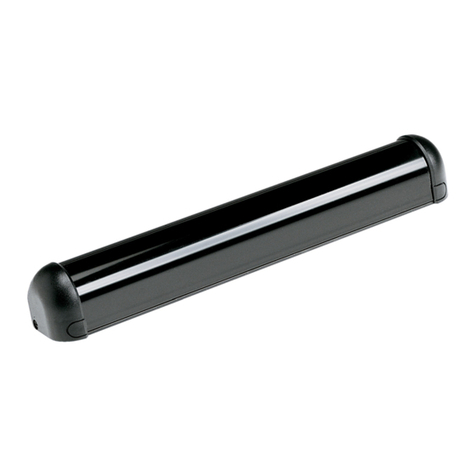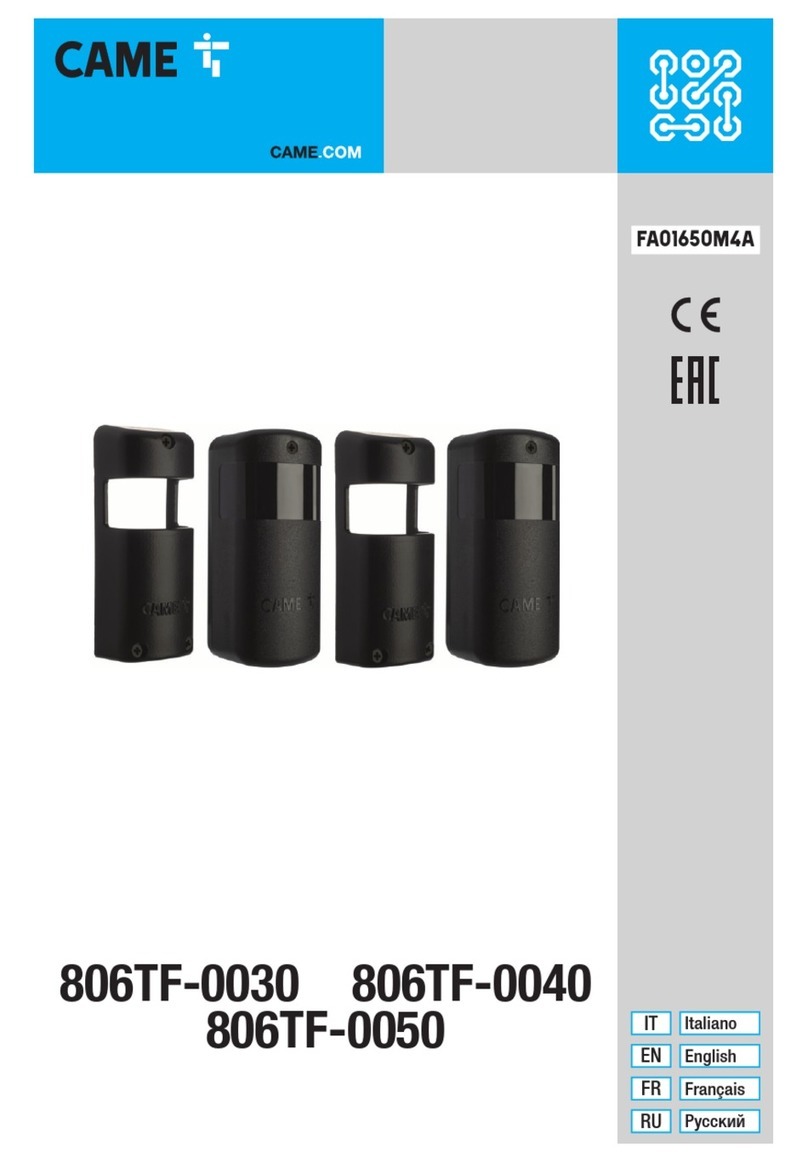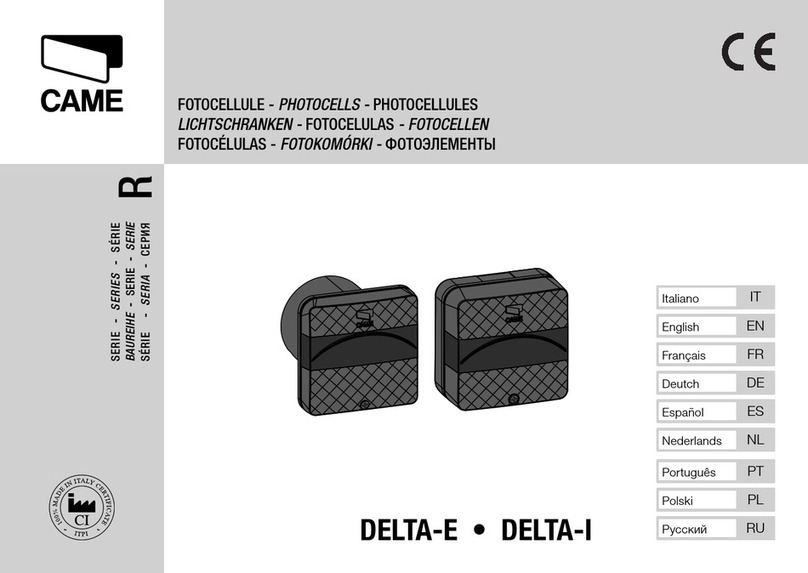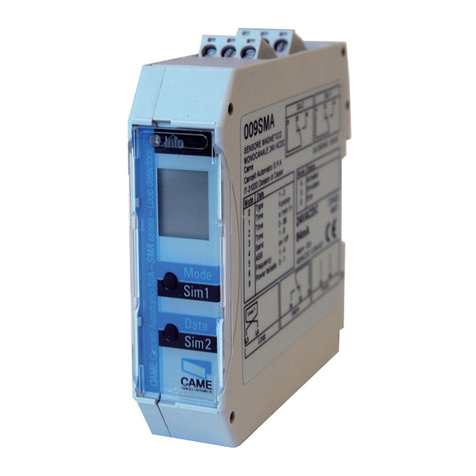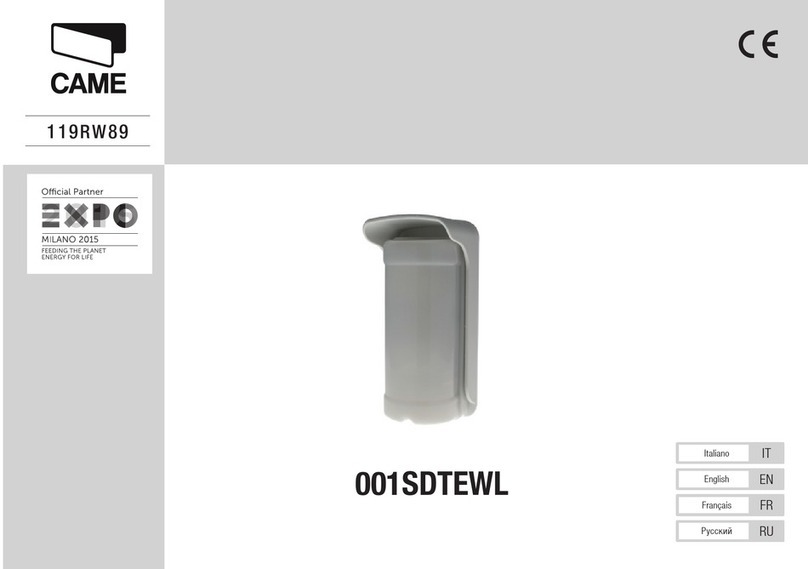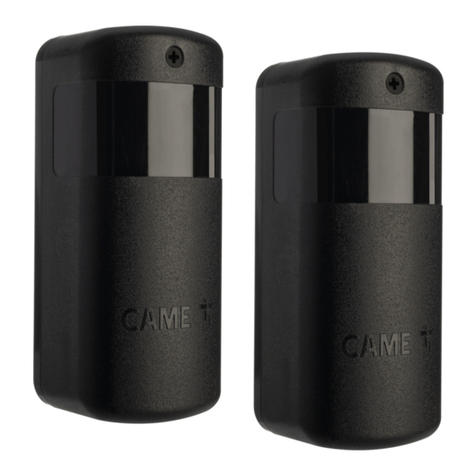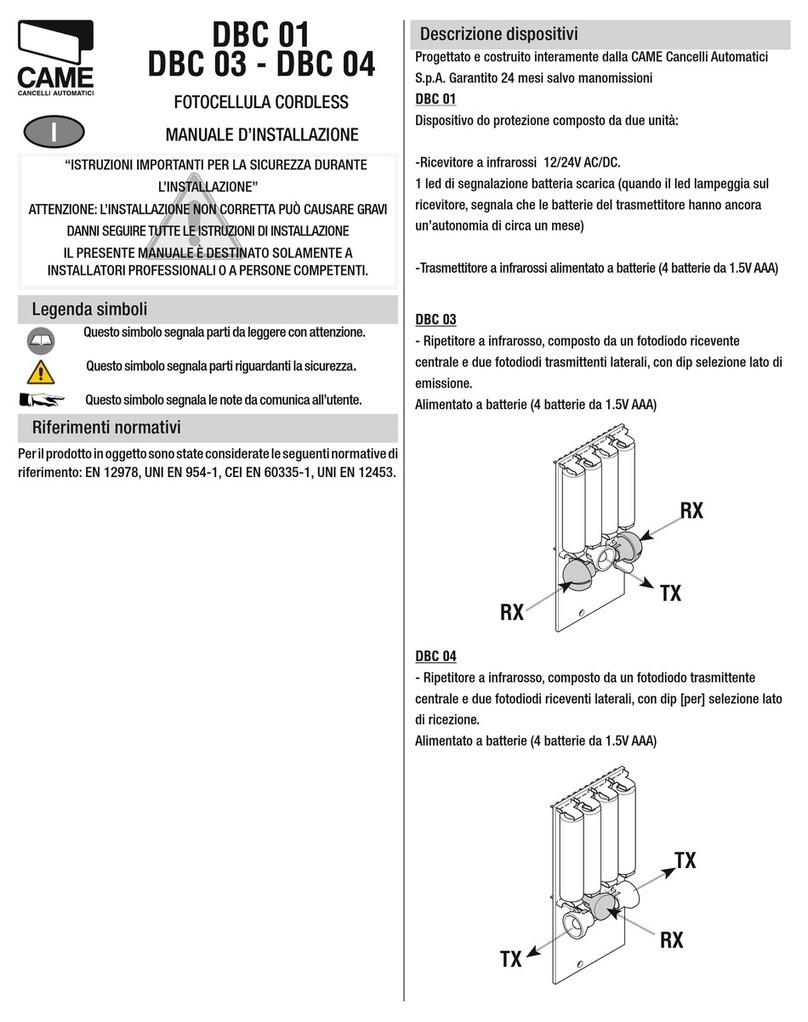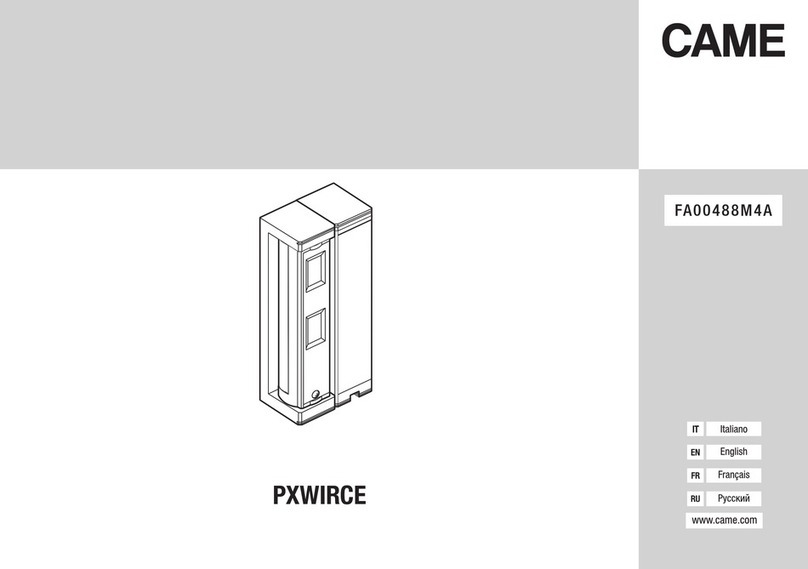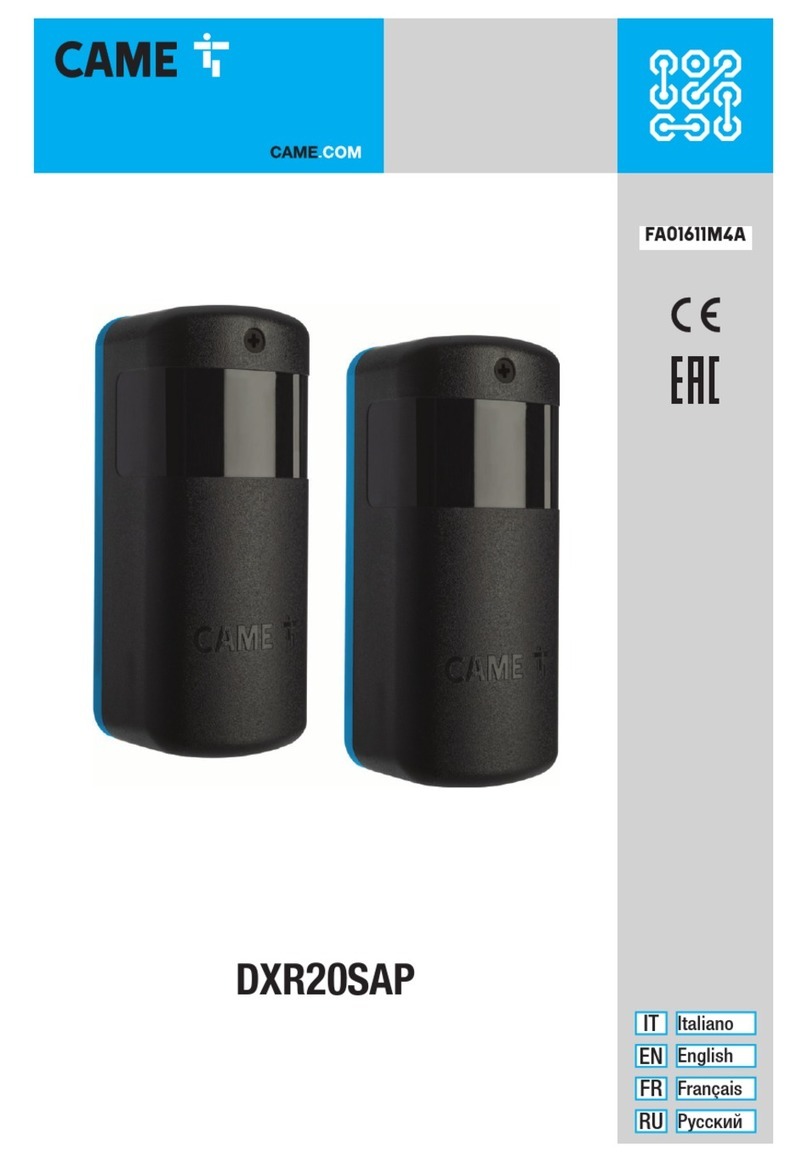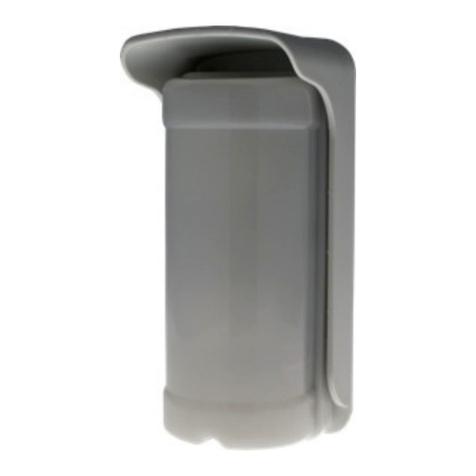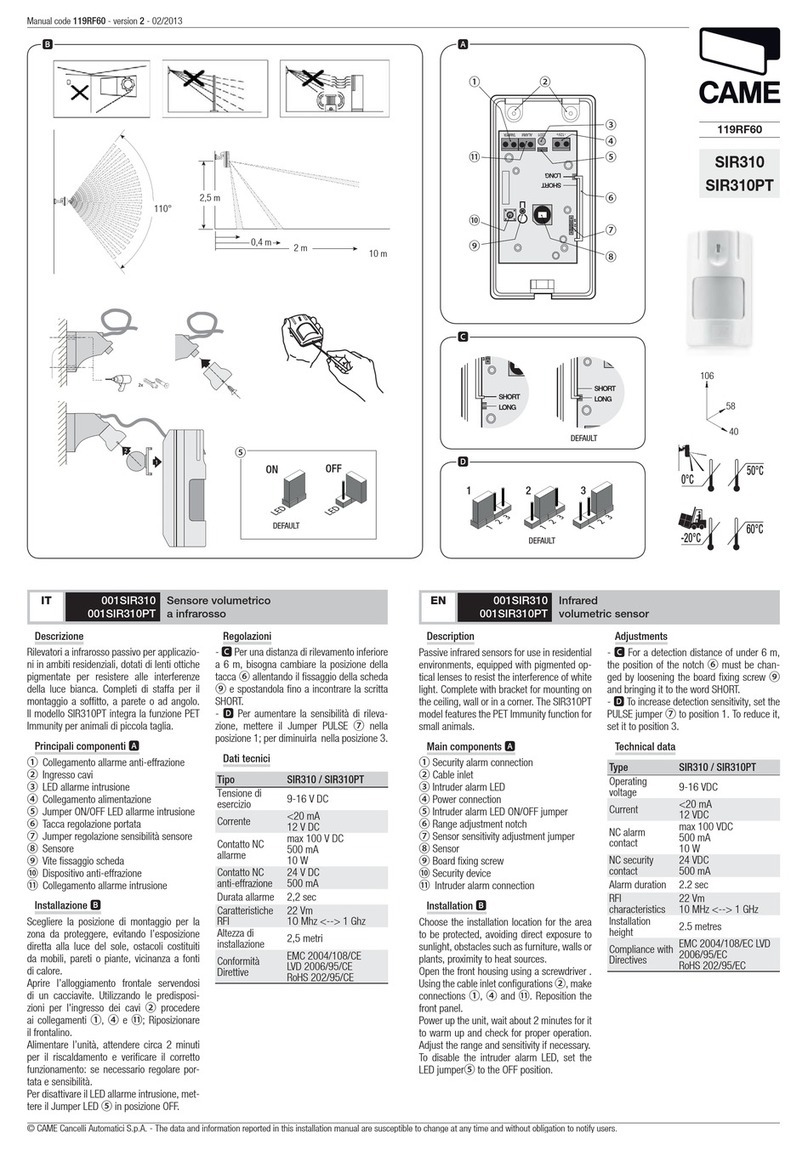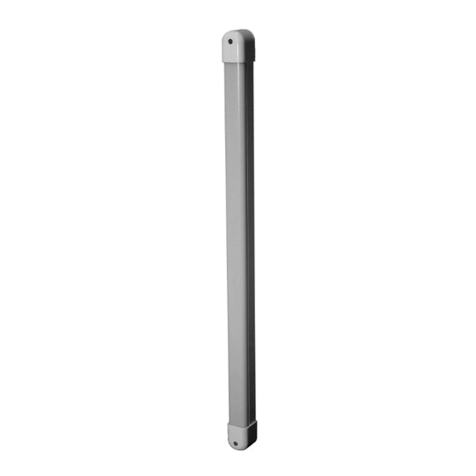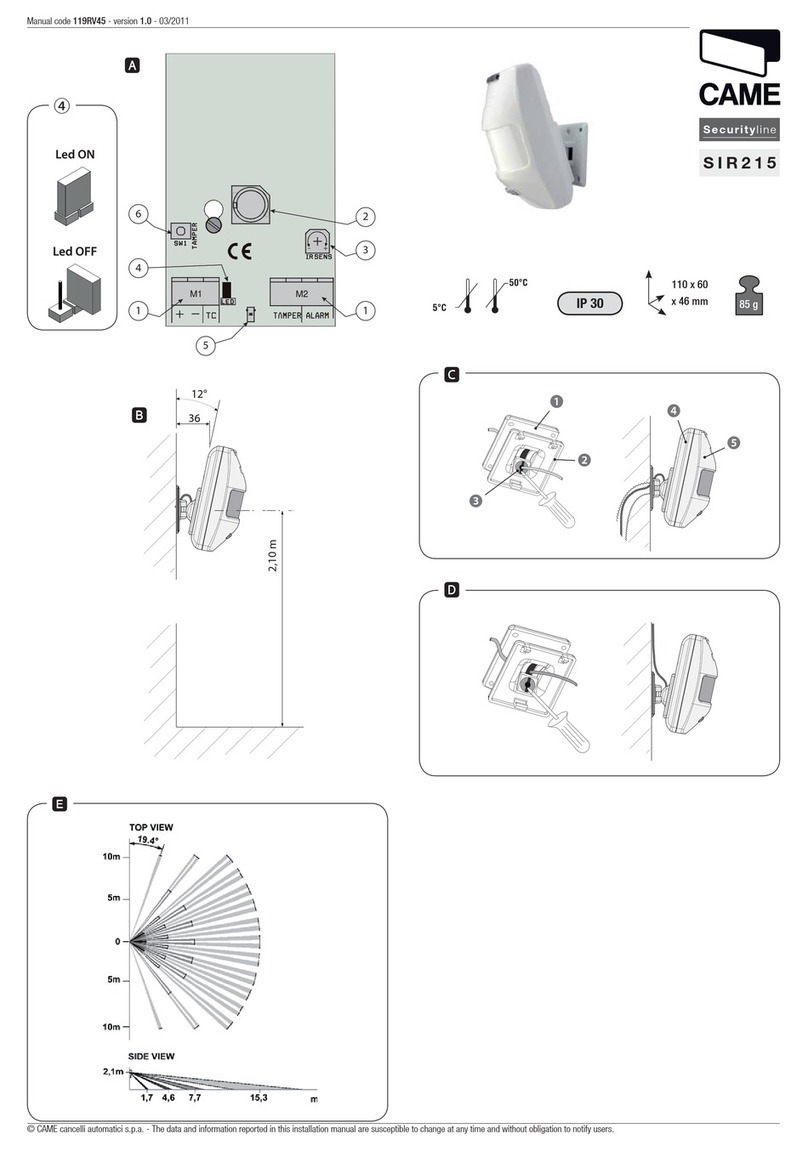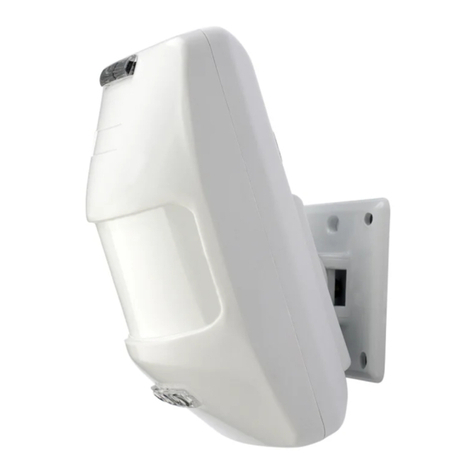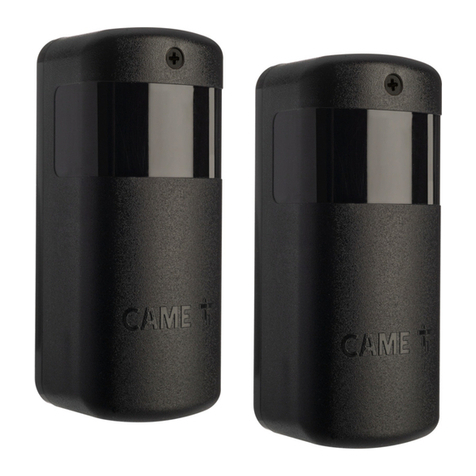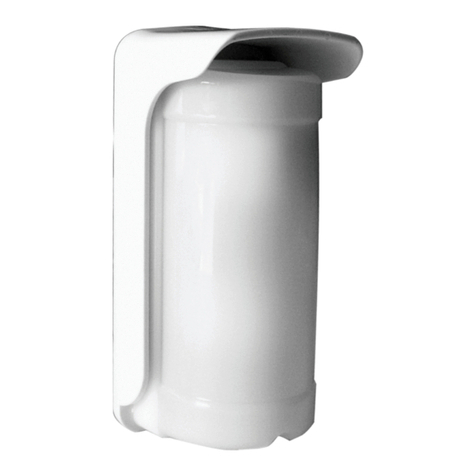
The relay picks up when the
loop is activated and drops
out when the loop is exited.
On delay:
The relay picks up after the
time t when the loop is acti-
vated and drops out when
the loop is exited.
Off delay:
The relay picks up when the
loop is activated and drops
out after the time t when the
loop is exited.
Activation pulse:
The relay picks up when the
loop is activated and drops
out again after the time t.
Impulse by leaving the loop:
By leaving the loop,
the relay picks up after
the time t, relay drops out.
The sensitivity 5(=Sensitivity) of the loop detector can be adapted in 9 stages: 51 = Lowest sensitivity, 59 = Highest sensitivity,
56 = Factory setting. The sensitivity setting depends on the frequencies (see chapter 3.6 Frequency).
In a device with 2 outputs, output 2 can be either activated or deactivated. In ProLoop 11, output 2 can also be set as an alarm output.
Four different frequencies F1, F2, F3, F4* can be set in order to avoid interference when using several loop detectors. These settings influence the
sensitivity (the sensitivity can be set in the range 1–7 for frequencies F1 to F3). F2 to F4 can be set for inductance < 150 µH and only F4 can be set for
inductance < 75 µH.
The direction logic function can only be used with a 2-loop device. Direction logic must have been set in the basic function (see chapter 3.2). Detection
can be performed from: ➝Loop 1 to loop 2 ➝From loop 2 to loop 1 ➝from both directions
Display after start-up:
Touch the «Mode» button once
to change to configuration
mode
Display after start-up:
Touch the «Mode» button once
to change to configuration
mode
Loop 2 is
selected
Loop 1 is
selected
ASB (=Automatic Sensitivity Boost). ASB is required in order to be able to recognise trailer drawbars after activation.
Basic function 2 «Barrier systems» or 3 «quiescent current» must be set for this function.
P 1 = Protection against power tailure activated: The sensitivity is restricted to 1–5 and the time function to h.
Time functions 1, time unit 2 and time factor 3 (see Table 4.1a for settings)
3.3
Sensitivity 4 (see Table 4.1a for settings)
3.4
Automatic Sensitivity Boost ASB 5(see Table 4.1a for settings)
3.5
Frequency 6(see Table 4.1a for settings)
3.6
Direction logic7(see Table 4.1a for settings)
3.7
Output 2 8(see Table 4.1b for settings)
3.8
Protection against power failure 9(see Table 4.1a for settings)
3.9
1- loop evice
2- loop evice
2
Signal characteristics with protection against power failure active (Function 9 = 1)
3.9.1
For Activation (e.g. Barriers)
Basic function 0 = 2 Barrier systems
Without power Initialisation Free Occupied Free
For Safeguarding (e.g. Barriers, bollards)
Basic function 0 = 3 Quiescent current
Without power Initialisation Free Occupied Free
4Changeover from operation to configuration mo e






